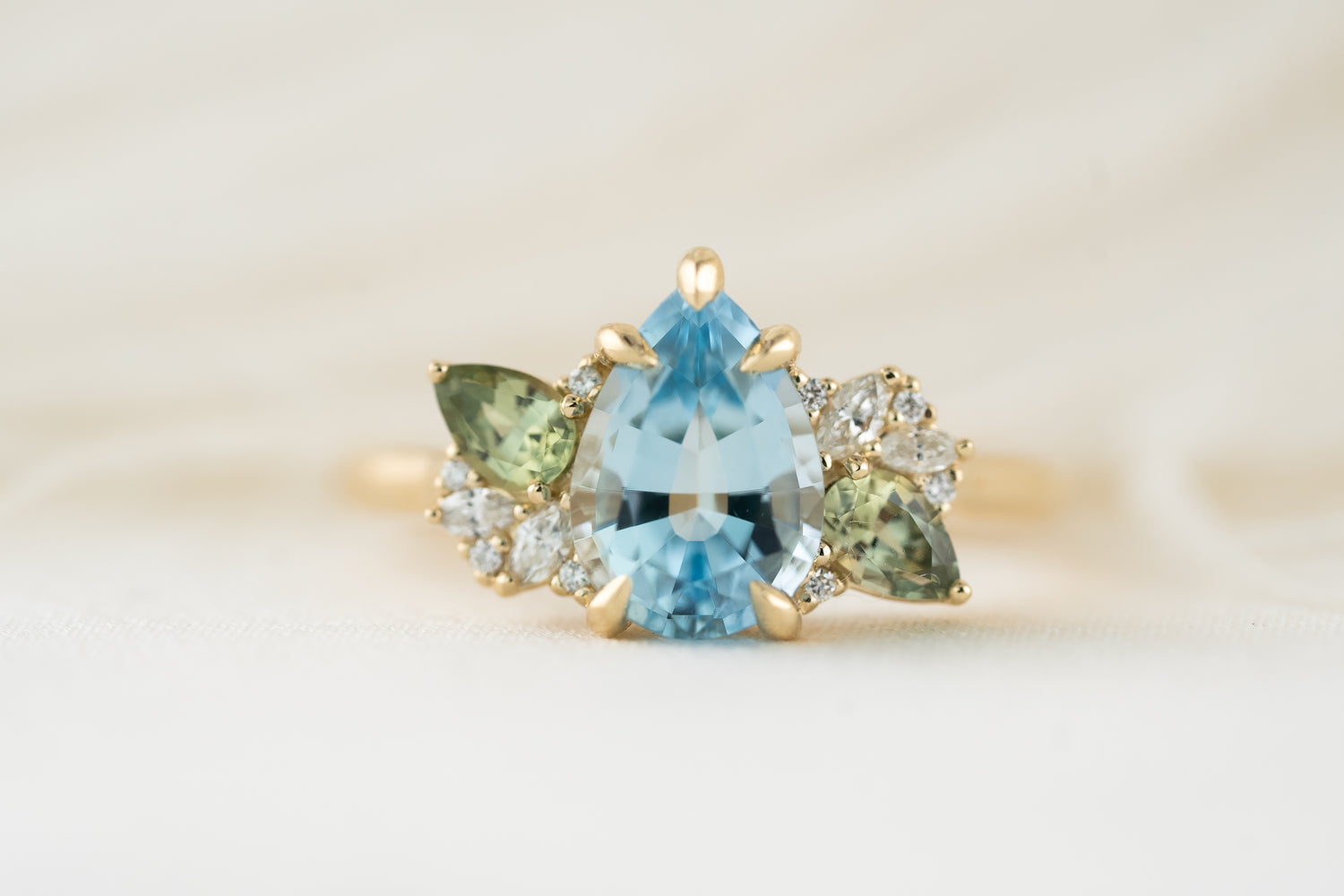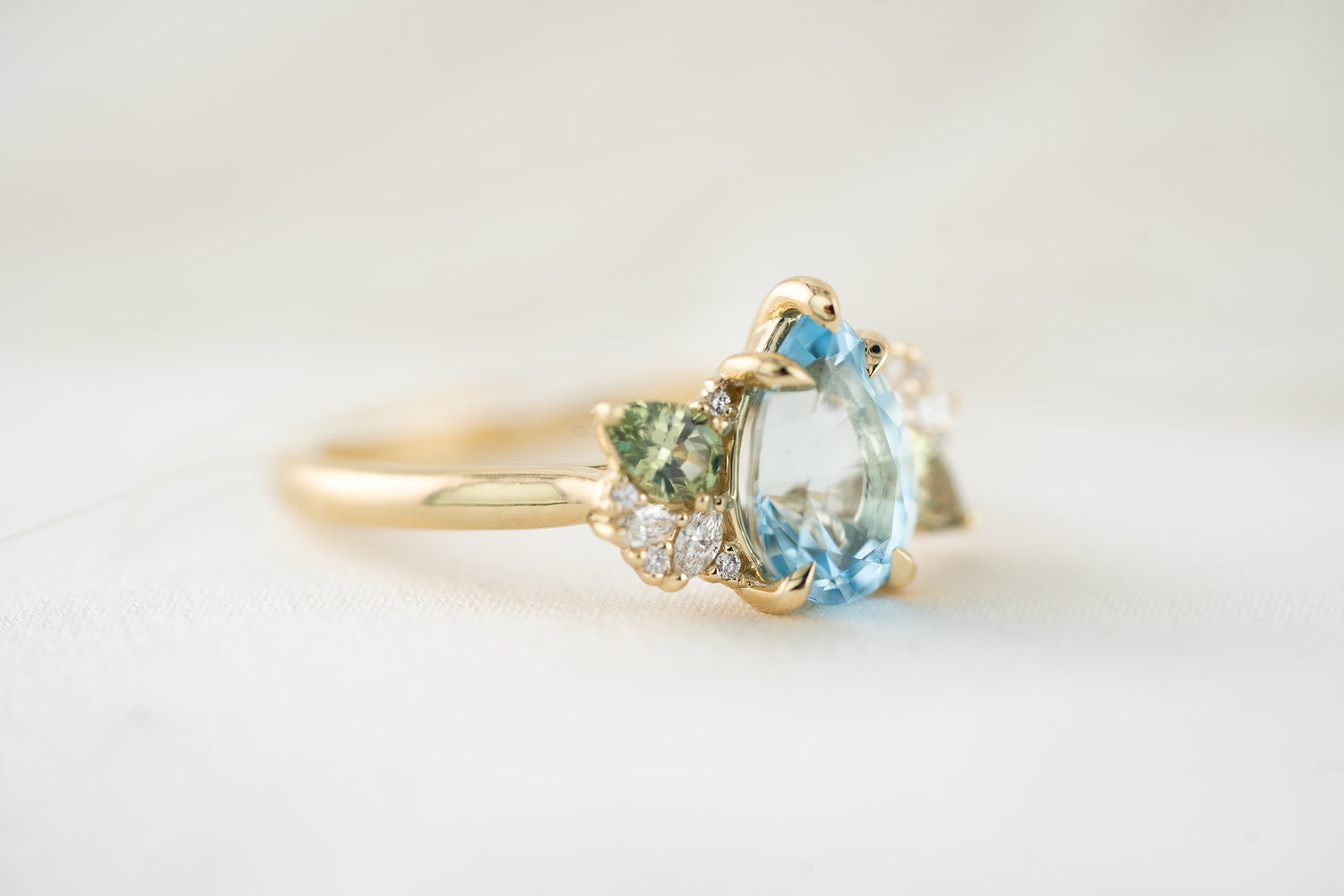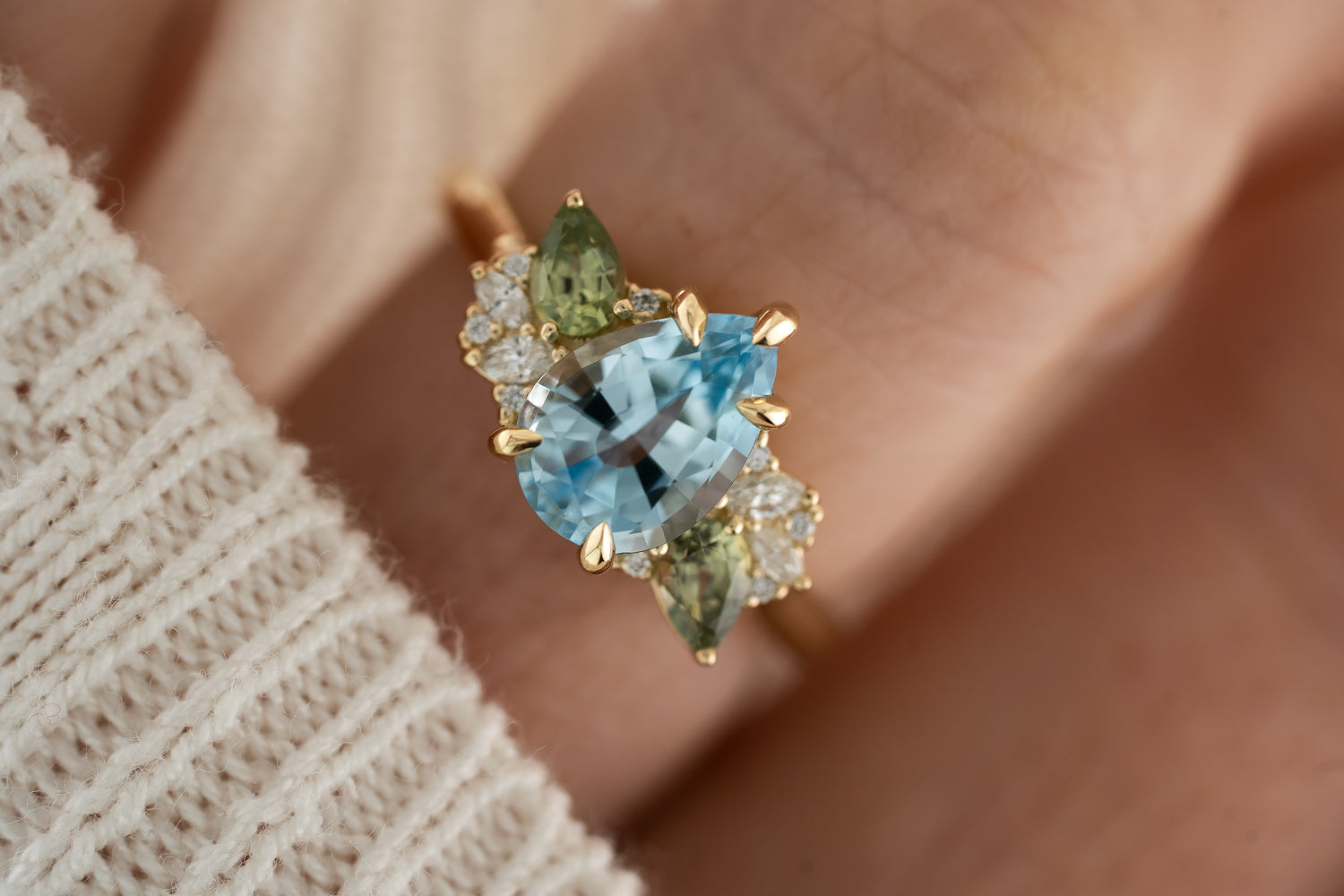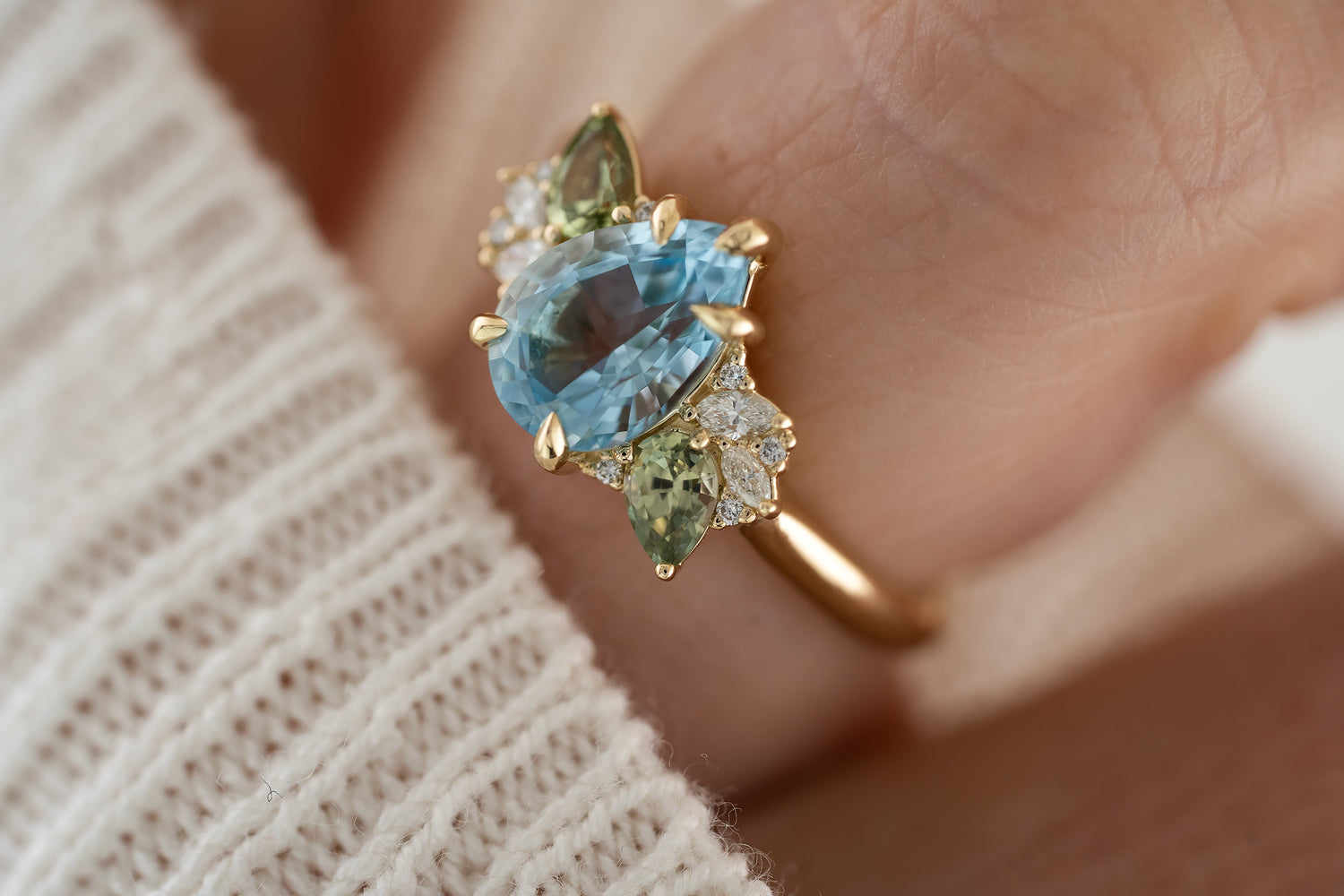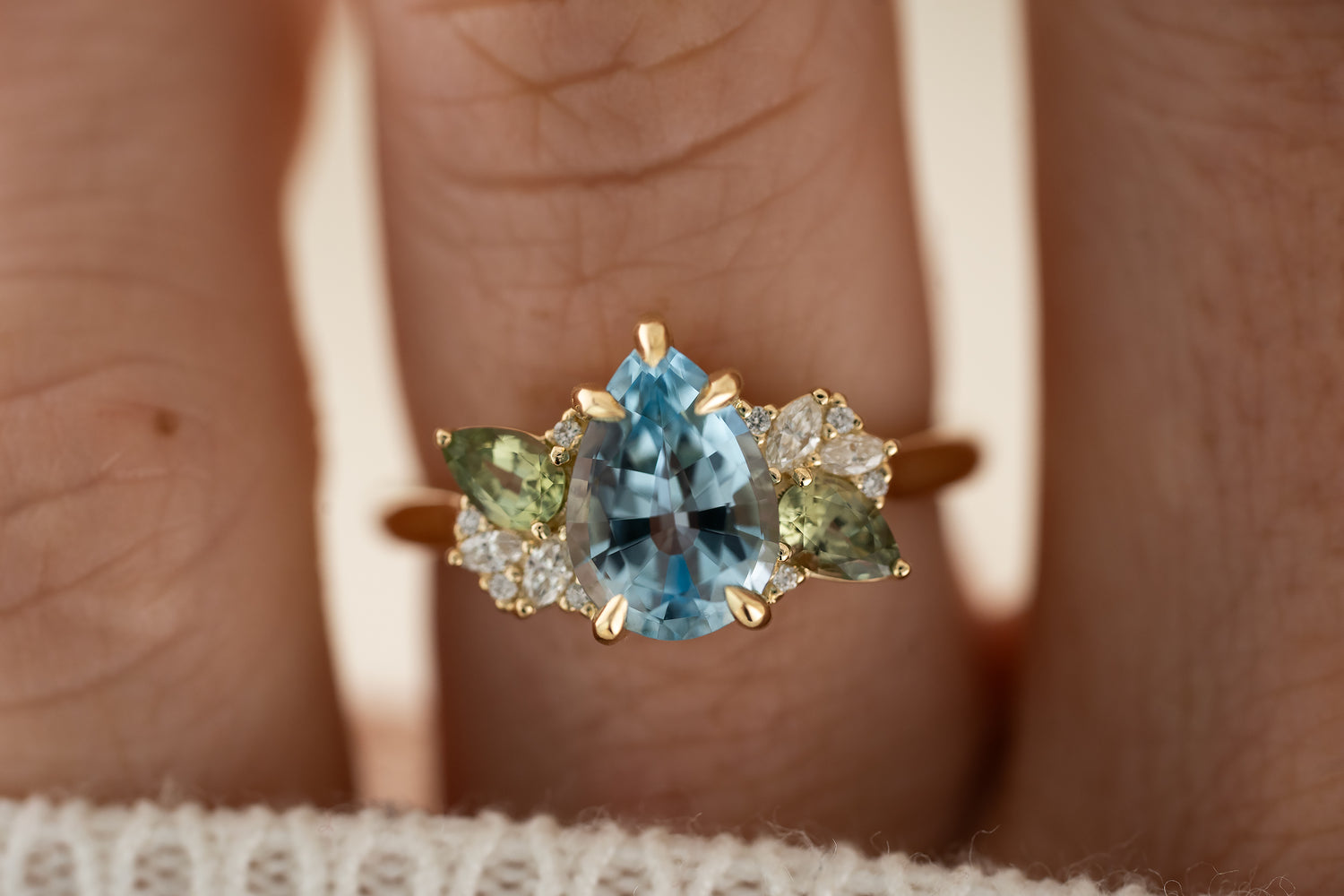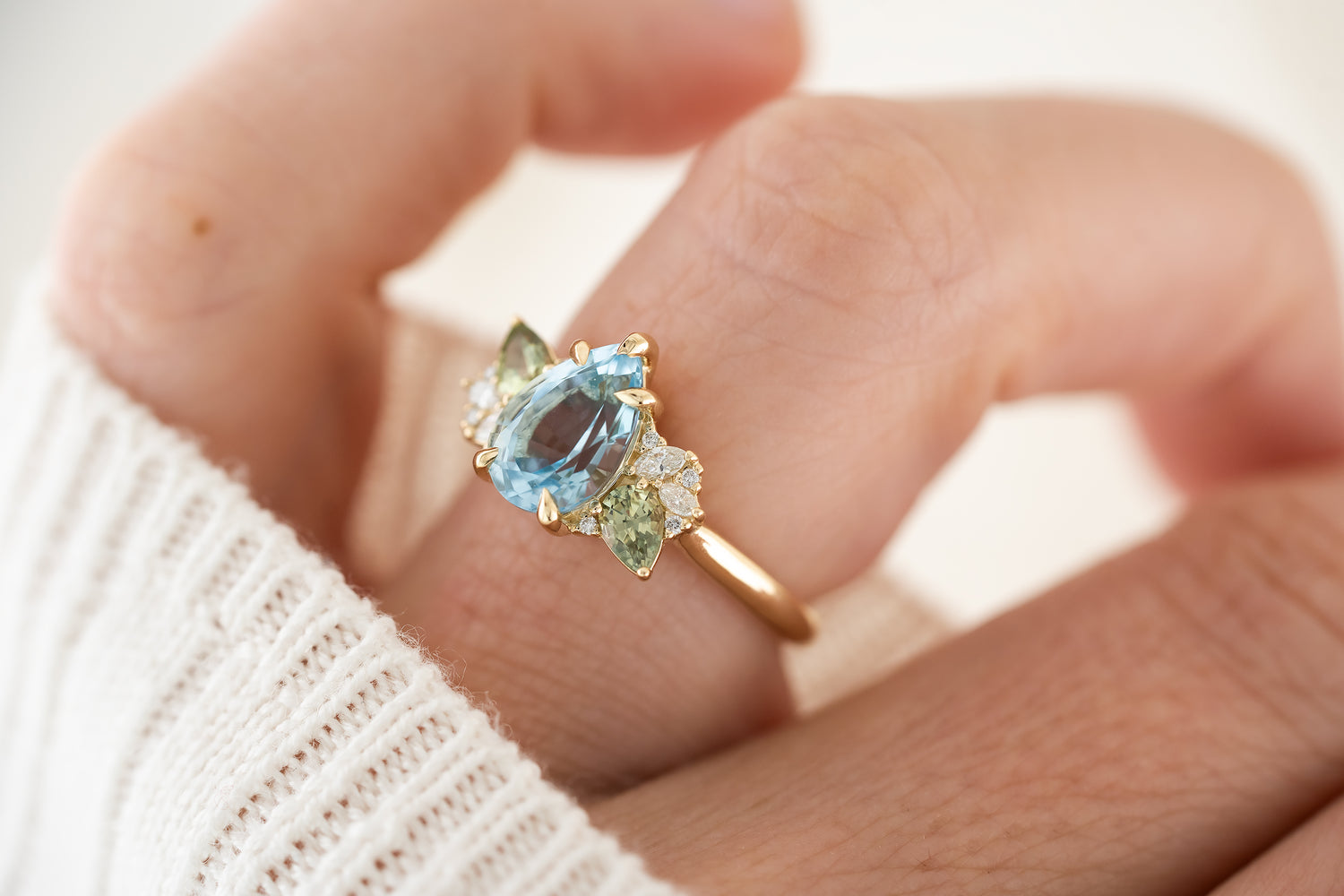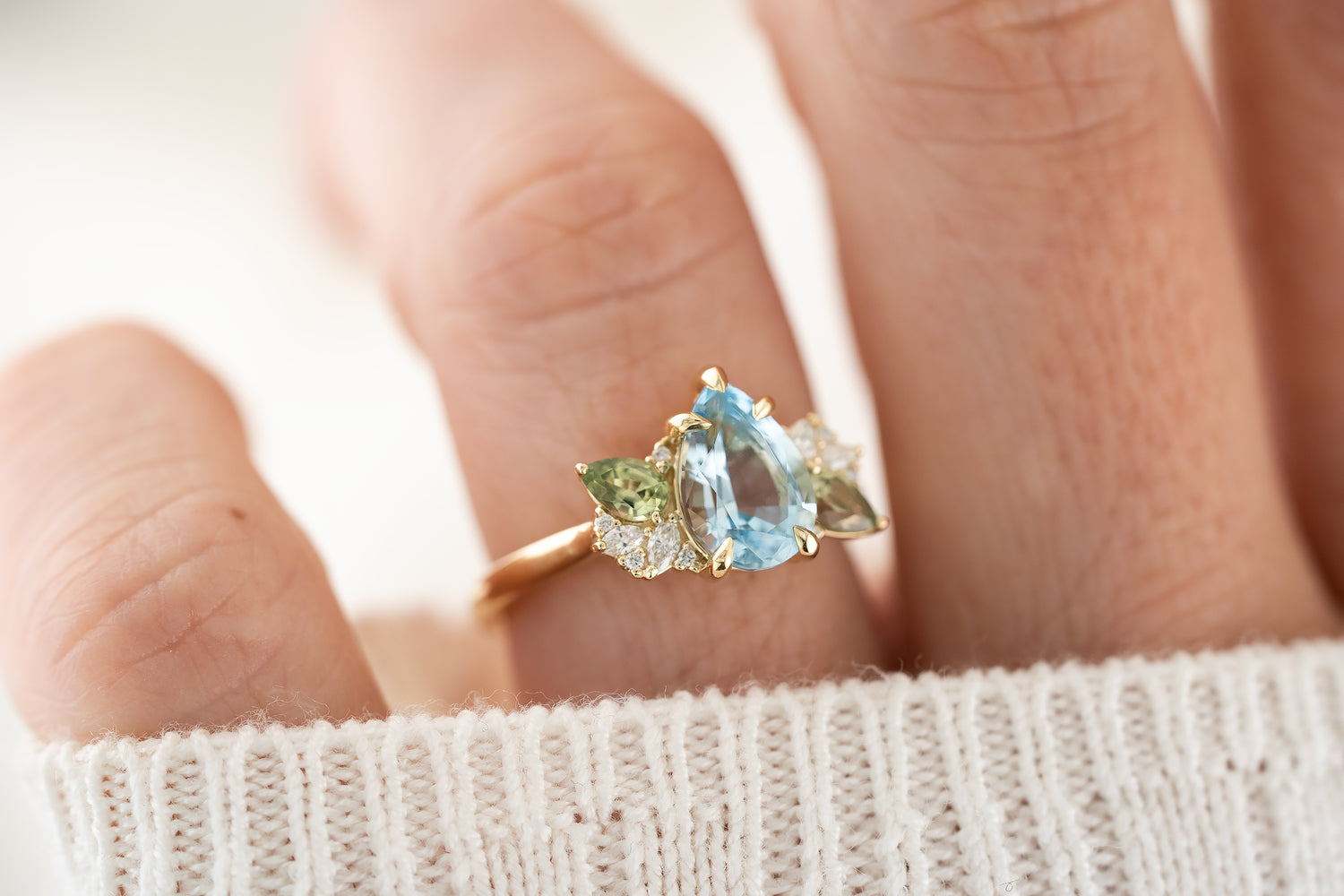






About Natural Aquamarine
-
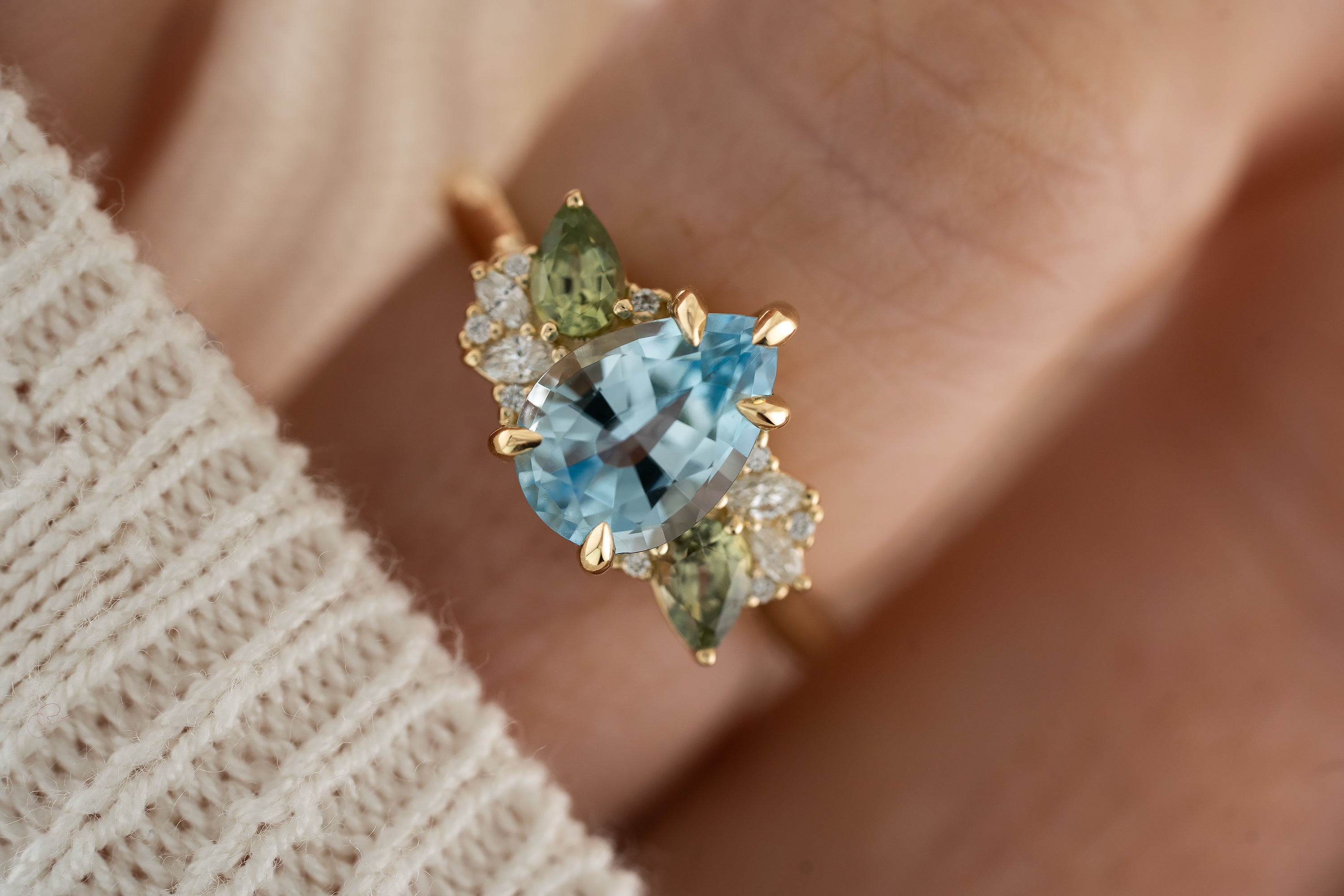
Hardness
Aquamarine, known for its beautiful blue to blue-green color, has a Mohs hardness of 7.5 to 8. This makes it a durable choice for everyday jewelry. While it is resistant to most scratches, handling it with care helps ensure it maintains its stunning appearance over time.
- The Mohs scale is a measurement system used to assess and compare the hardness of minerals. Developed by Friedrich Mohs in 1812, it assigns a ranking from 1 to 10 to minerals based on their ability to scratch or be scratched by other minerals. This scale provides a simple and practical way to understand the relative hardness of different minerals, with 1 being the softest (e.g., talc) and 10 the hardest (e.g., diamond).
-
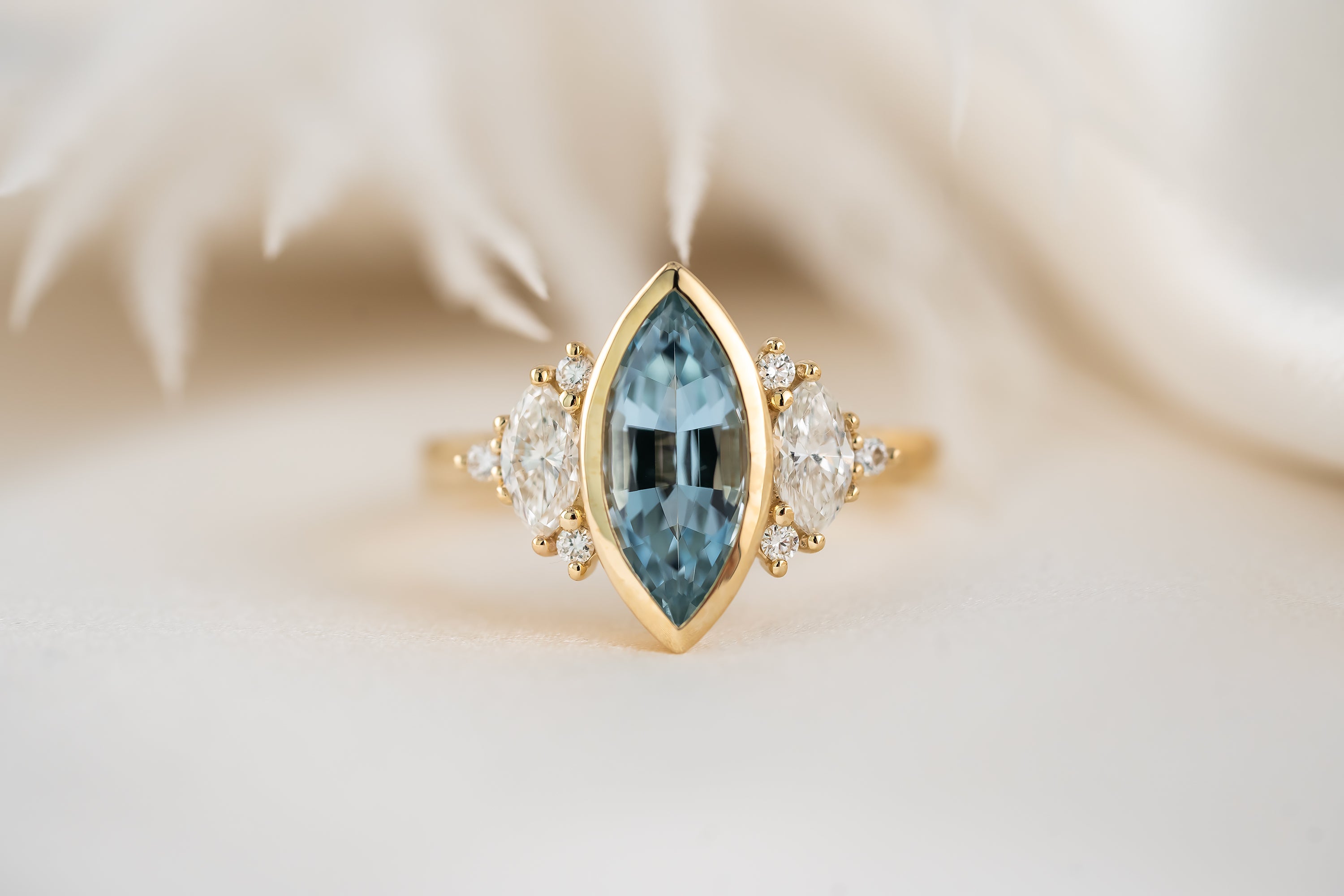
Color Range & Varieties
Aquamarine exhibits a beautiful spectrum of colors, ranging from light, delicate blues to deep, vivid blues and occasionally a blue-green tint. The most sought-after shades are those with a rich, intense blue, often referred to as "cornflower blue," which can command higher prices due to its striking appearance. Light blue aquamarine offers a more subtle elegance, while medium blue provides a balanced and pleasing hue.
-
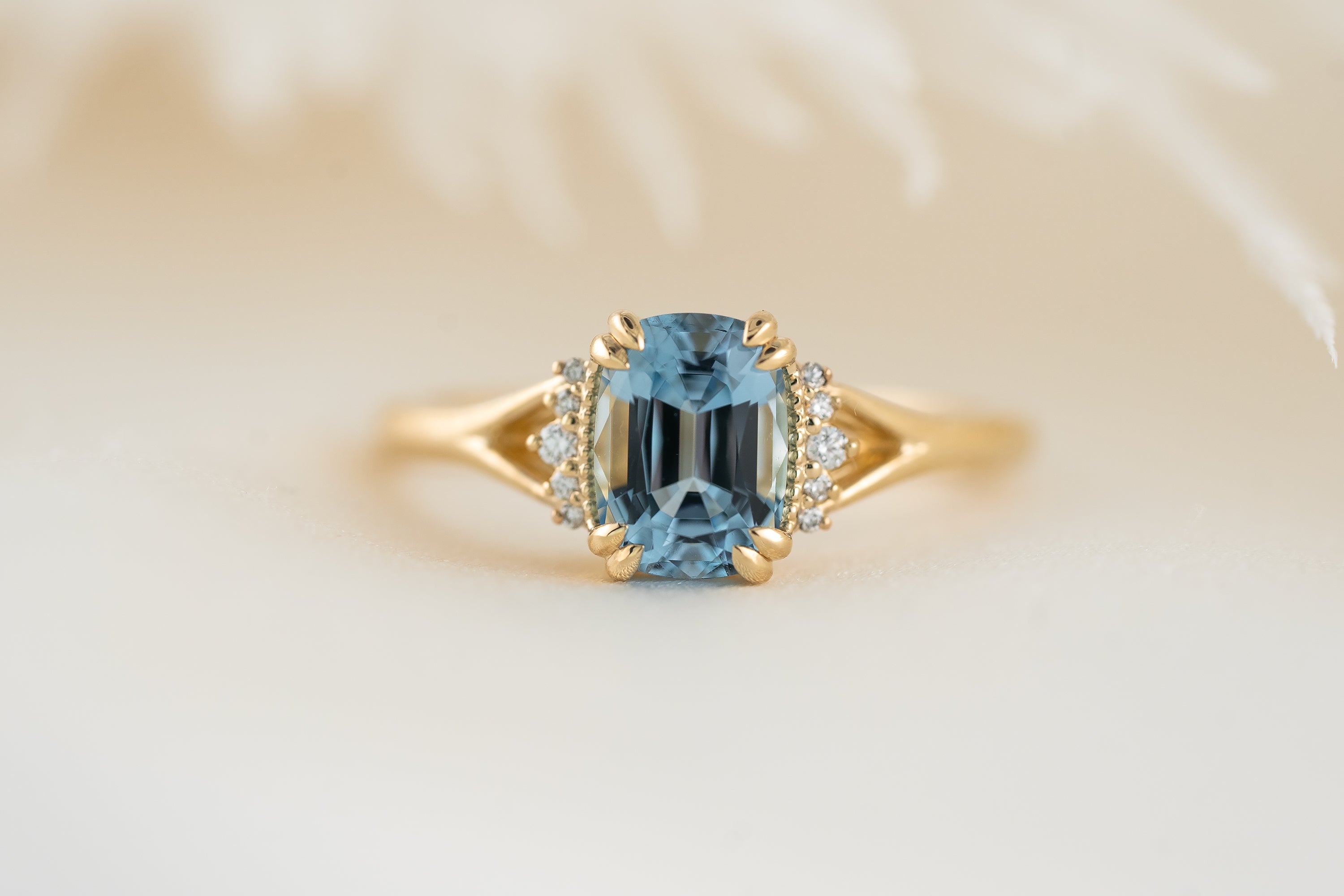
Origin, Stability, & Treatments
Origin
Aquamarine is found in several locations around the world and its color can vary depending on its origin.
Brazil is one of the most well-known sources of aquamarine. Brazilian aquamarines often display a range of colors from light blue to a rich, vibrant blue. The most prized Brazilian aquamarines are those with a deep, intense blue, often referred to as "cornflower blue."
Madagascar Aquamarines from Madagascar can exhibit a range of blues, from pale to a greenish-blue. Malagasy aquamarines are known for their clarity and can sometimes show a more pronounced greenish tint, giving them a unique appearance compared to other sources.Mozambique is a significant source of high-quality aquamarine, known for producing gemstones with distinct and attractive characteristics. Aquamarine from Mozambique typically features a range of colors, from light, pale blue to a more vivid, intense blue.
Nigerian aquamarines often come in various shades, including a distinctive teal or blue-green color. They can be quite striking and sometimes feature a unique blend of blue and green tones.
Pakistan Aquamarines from Pakistan, particularly from the Khyber Pakhtunkhwa region, are known for their exceptional clarity and deep blue color. They can often rival the hues found in Brazilian aquamarines but may also feature a greenish tint.
Sri Lankan aquamarines generally have a lighter blue color and can sometimes display a subtle greenish hue. They are valued for their clarity and the gentle, serene blue tones they exhibit.
The color and quality of aquamarine can also be influenced by factors such as the specific geological conditions of the mining area and the gemstone's cut and treatment.Stability & Treatments
Aquamarine is known for its color stability. Once enhanced by heat treatment—a common and permanent process used to deepen its blue hue—the color remains consistent over time. This treatment is stable and does not cause the color to fade or change under normal conditions. We do not typically work with heat treated aquamarine, and all treatments are disclosed on our colored gemstones.


